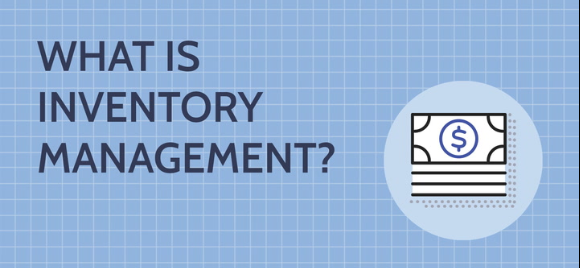Efficient inventory systems are essential for effectively managing valuable assets, whether it’s in a business or personal collection. Without a proper system in place, it’s easy for valuable items to get lost, underutilized, or even mismanaged. This can lead to costly mistakes and missed opportunities. A well-organized inventory system helps ensure that every asset is tracked, monitored, and accessible when needed. It provides a clear overview of asset status, location, and condition, making it easier to make informed decisions. In this article, we will explore how to implement an efficient inventory system for managing valuable assets. From choosing the right tools to organizing and maintaining your inventory, we’ll cover everything you need to know to streamline your processes and protect your valuable assets. Let’s dive into the world of efficient asset management!
Challenges of Managing Assets
One of the most frustrating challenges of managing valuable assets is losing track of them. Whether you’re managing inventory for a business or keeping an eye on personal valuables, the constant worry about misplaced items can create unnecessary stress. When an asset is hard to locate, it wastes valuable time searching through piles of paperwork, unorganized shelves, or forgotten corners of a warehouse. Not only does this lead to inefficiencies, but it also increases the risk of losing valuable assets altogether. For businesses, this can result in financial losses, and for individuals, it can cause a lot of emotional strain. The disorganization can leave you feeling overwhelmed and out of control, unsure of where your items are or how to keep them properly managed. Without a streamlined system, managing assets can feel like a constant uphill battle, leaving you frustrated and unproductive.
Choosing the Right Inventory System
To solve the problem of managing valuable assets effectively, the first step is to choose the right inventory system. A good inventory management system allows you to track assets in real-time, ensuring that everything is accounted for and easily accessible. The right system will also automate processes, reducing human error and making it easier to maintain up-to-date records. There are many options available, from simple spreadsheets to advanced software solutions that integrate with your existing business tools.
For smaller businesses or individuals with fewer assets, cloud-based systems may offer an affordable, user-friendly solution. These systems allow you to easily update and monitor your inventory from anywhere, making them highly convenient. For businesses with larger or more complex inventories, consider implementing RFID or barcode systems for more accurate tracking.
For physical storage needs, quality storage units in Phoenix, AZ at NSA Storage can provide a secure place to store valuable items that are not regularly used. Having a reliable off-site storage option ensures that your assets are safe and accessible when needed, while freeing up space for items that require more immediate attention.
By carefully selecting the right inventory system and storage solutions, you can streamline asset management, reduce errors, and create a more organized, efficient process. Whether it’s digital or physical, a good system will help you stay on top of your assets, making sure nothing is lost or overlooked.
Tracking and Organizing Assets
Effective asset tracking is key to maintaining an organized system and ensuring your valuable items are always accounted for. Here are a few actionable tips to improve your asset management:
- Implement barcode scanning: Use barcode systems for quick and easy asset tracking, making data entry more accurate.
- Utilize cloud-based software: Track and update inventory in real time with cloud-based systems that allow remote access.
- Group similar items: Store similar items together for easy identification and retrieval.
- Label everything clearly: Use clear labels for easy recognition and to avoid confusion.
- Schedule regular audits: Perform regular inventory checks to ensure your records are up-to-date.
By following these tips, you’ll have better control over your assets, save time on searches, and reduce the chance of losing important items.
Organizing for Quick Access
A local art gallery, ArtSpace, faced significant challenges with managing its inventory of high-value pieces. With hundreds of paintings, sculptures, and delicate items, it was difficult for the staff to quickly find what they needed for client showings, exhibitions, or sales. Valuable time was spent searching through storage areas, and items occasionally went unaccounted for, which led to frustration and stress among the staff. They realized that without a streamlined asset management system, their operations were inefficient and risked losing valuable pieces.
To address this, ArtSpace implemented a new inventory management system. They started by categorizing each item and labeling them with clear barcodes. They integrated a cloud-based inventory system that allowed staff to track each piece in real time. Additionally, they organized their storage area into sections, each designated for different categories of artwork. This made it easy to retrieve items quickly when needed.
The change had a significant impact. Staff were able to find pieces in seconds, and the gallery experienced fewer instances of misplaced items.
Statistic: Businesses that implement organized asset management systems report a 20% increase in operational efficiency.
ArtSpace’s story demonstrates how an organized inventory system can improve workflow and ensure the security of valuable items. By investing in proper organization and inventory tracking, businesses can operate more efficiently, save time, and ultimately reduce the risk of mistakes.
Frequently Asked Questions
How can efficient inventory systems benefit businesses?
Efficient inventory systems streamline asset management by making it easier to track, store, and access valuable items. With the right system in place, businesses can reduce the time spent searching for items, prevent mistakes, and improve overall productivity. An organized system also provides better oversight, helping to maintain accurate records and avoid costly errors.
What are the best storage solutions for asset management?
The best storage solutions depend on the size and type of assets being managed. For smaller items, use shelving units, filing cabinets, or storage bins for easy organization and access. For larger or less frequently used assets, storage units in Phoenix, AZ can provide a secure and efficient space to store materials, freeing up valuable space in your workspace for more immediate needs. Utilizing both in-house storage and off-site options ensures that your inventory remains well-organized and accessible.
How do I maintain my inventory system long-term?
To maintain your inventory system long-term, regularly update records, perform audits, and keep your storage space organized. Consistency is key in ensuring the system remains effective and that assets are easily accessible when needed.
Streamline Your Asset Management
Proper inventory systems are essential for businesses looking to streamline asset management and improve operational efficiency. By implementing organized storage solutions and utilizing the right tools, you can make your workflow more efficient, reduce stress, and prevent costly mistakes. Start today by assessing your current systems, introducing better tracking methods, and organizing your storage. A well-maintained inventory system will not only save time but also enhance the overall performance of your business, ensuring that your valuable assets are managed with ease.











